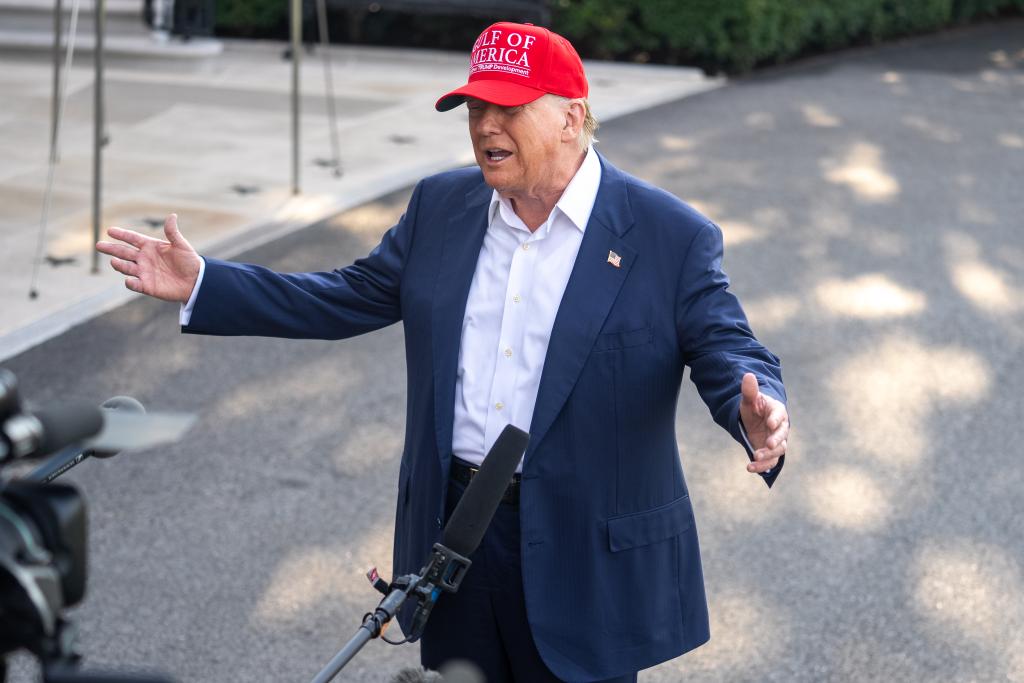TMTPOST -- U.S. President Donald Trump is reportedly going to ramp up tariffs on various sectors by August 1, the new deadline for reciprocal duties on worldwide trading partners he set.

Credit:China Central Television
Trump is readying plans for industry-specific tariffs to kick in alongside his country-by-country duties in two weeks, Bloomberg on Friday cited a person with knowledge of the matter. Following the copper tariffs that Trump planned to levy, his administration was said to have discussed making announcements on lumber, chips, critical minerals and drugs in that order, though that cadence has not been finalized and may change.
It is notable that the U.S. Commerce Department has initiated a wave of Section 232 investigations from March 10 to July 1, covering from lumber, semiconductors, pharmaceuticals, critical minerals, commercial aircrafts, to drones. The growing list of 232 investigations indicated how widely the possible sectoral tariffs could hit.
Trump on July 9 said he would impose a 50% tariff on all copper imports into the United States, effective August 1. U.S. government officials could release details of the copper duties days ahead of they are set to come into effect, according to a Bloomberg’s source.

It was reported that all the sectoral tariffs, once fully enforced, would cover 30% to 70% of a country’s imports into the U.S., with much of the rest being hit by country-specific charges.The report cited a staff draft document, suggesting that the planned tariffs on pharmaecuticals focused on between 80 and 90 generic essential medicines, as well as specialty chemicals and precursors.
The probe into lumber is expected to conclude by summer’s end, according to trade attorney Luck Meisner on Wednesday. The report hinted duties on lumber could be much higher than exisiting sectoral duties. It noted more than a dozen lawmakers have pushed the Commerce Department to impose tariffs of at least 60% on wood imports like cabinets and vanities, and some have called for a tariff rate of 100% on cabinets.
The Trump administration so far has implemented tariffs on auto and parts from May 3, and hiked duties on steel and aluminum imports more than a month earlier.
Trump last month signed a proclamation to raised tariffs on steel and aluminum imports into the country to 50% from 25%, taking into effect on June 4. The new tariffs apply to imports from all the U.S. trading partners except Britain.
This is the second time that Trump hiked tariffs on steel and aluminum imports in nearly three months. The president on February 10 signed an order to impose 25% steel and aluminum tariffs starting March 12. He in the meantime removed the exemptions from his 2018 tariffs on steel, meaning that all steel imports should be taxed at a minimum of 25%, and also raises his 2018 aluminum tariffs from 10% to 25%.
Earlier this month, Trump signaled more sectoral tariffs on the horizon. Trump during a Cabinet meeting on July 8 disclosed steep tariffs on the pharmaceutical sector will be announced “very soon”, while he could offer the pharmaceutical manufacturers at least a year for transition of their production to the U.S. before implementing the tariffs up to 200%.
"We’re going to give people about a year, year and a half to come in, and after that they're going to be tariffed," Trump said. "If they have to bring the pharmaceuticals into the country, … they're going to be tariffed at a very high rate — like 200%."
Trump on Tuesday evening said the United States would soon inform a group of minor trading partners of tariffs higher than 10%. “We’ll be releasing a letter soon talking about many countries that are much smaller, where you might not do an [individual] letter,” Trump said after returning from Pittsburgh, adding: “we’ll just do one tariff for all of them,” and that the rate would “probably be a little over 10%.”
Trump also disclosed he could impose impose tariffs on pharmaceuticals by August 1 and that levies on semiconductors could come soon as well. “Probably at the end of the month, and we’re going to start off with a low tariff and give the pharmaceutical companies a year or so to build, and then we’re going to make it a very high tariff,” Trump said.
Trump also said his timetable of the semiconductor tariffs was similar to the drug tariffs, and it was “less complicated” to impose levies on chips.
更多精彩内容,关注钛媒体微信号(ID:taimeiti),或者下载钛媒体App

